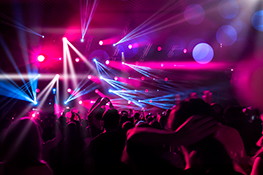Hyper-Realistic LED Projection Mapping: Transforming Stages into Immersive Worlds
The Evolution of Stage Design
Stage design has undergone a dramatic transformation in recent years. Gone are the days of static backdrops and limited lighting effects. Today, audiences demand immersive experiences, and technology is stepping up to meet that demand. At the forefront of this revolution is hyper-realistic LED projection mapping, a technique that seamlessly blends digital imagery with physical environments to create breathtakingly realistic and dynamic stage productions.
Understanding LED Projection Mapping
LED projection mapping leverages the power of high-resolution LED screens and sophisticated software to project images onto three-dimensional surfaces. Unlike traditional projection, which often struggles with complex shapes and uneven surfaces, projection mapping uses specialized software to compensate for these irregularities, resulting in a perfectly fitted image that conforms to the stage’s contours. This allows for the creation of incredibly detailed and believable environments, transforming a flat stage into anything from a bustling city street to a fantastical alien landscape.
The Power of Hyper-Realism
The key differentiator of hyper-realistic LED projection mapping is its focus on detail and accuracy. This goes beyond simply projecting an image; it involves painstakingly creating textures, lighting, and even subtle movements to create an illusion of depth and realism that is almost indistinguishable from reality. Advanced techniques like 3D modeling, photogrammetry, and real-time rendering are used to achieve this level of fidelity, resulting in truly awe-inspiring visual spectacles.
Applications in Stage Production
The applications for hyper-realistic LED projection mapping in stage productions are vast and varied. From live concerts and theatrical performances to corporate events and fashion shows, this technology is revolutionizing the way artists interact with their audiences. Imagine a rock concert where the stage transforms into a moving, breathing organism, or a theatrical production where the setting seamlessly shifts from a medieval castle to a futuristic cityscape. The possibilities are limited only by the imagination.
Technical Aspects and Considerations
Implementing hyper-realistic LED projection mapping requires a combination of technical expertise and creative vision. This includes careful planning and design, precise calibration of projectors and screens, and the use of powerful, high-performance computing systems to handle the complex rendering requirements. Factors such as ambient light levels, screen material, and projector resolution all play a critical role in achieving optimal results. A skilled team of lighting designers, projection specialists, and software engineers is essential to ensure a successful implementation.
The Future of Immersive Stage Design
The future of hyper-realistic LED projection mapping is bright. As technology continues to advance, we can expect even greater levels of realism, higher resolutions, and increased interactivity. The integration of augmented reality (AR) and virtual reality (VR) elements promises to further blur the lines between the physical and digital worlds, creating truly immersive and unforgettable experiences for audiences worldwide.
Conclusion
Hyper-realistic LED projection mapping is more than just a technological advancement; it is a creative revolution that is reshaping the landscape of stage design. By seamlessly merging the digital and physical realms, it allows artists to create truly immersive and unforgettable experiences, pushing the boundaries of artistic expression and audience engagement. As the technology continues to evolve, its impact on the world of stage production will only continue to grow.
Keywords:
LED Projection Mapping, Hyper-realistic projection mapping, Stage Design, Immersive experiences, Stage Lighting, Projection Technology, 3D Mapping, Event Production, Concert Lighting, Theatrical Lighting, Augmented Reality, Virtual Reality


 Auditorium Construction Services
Auditorium Construction Services 